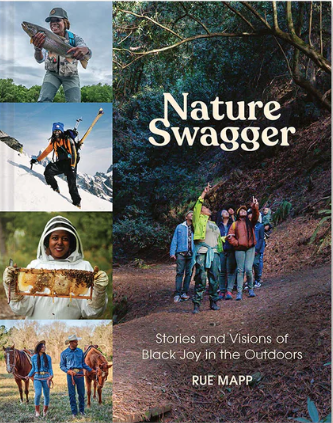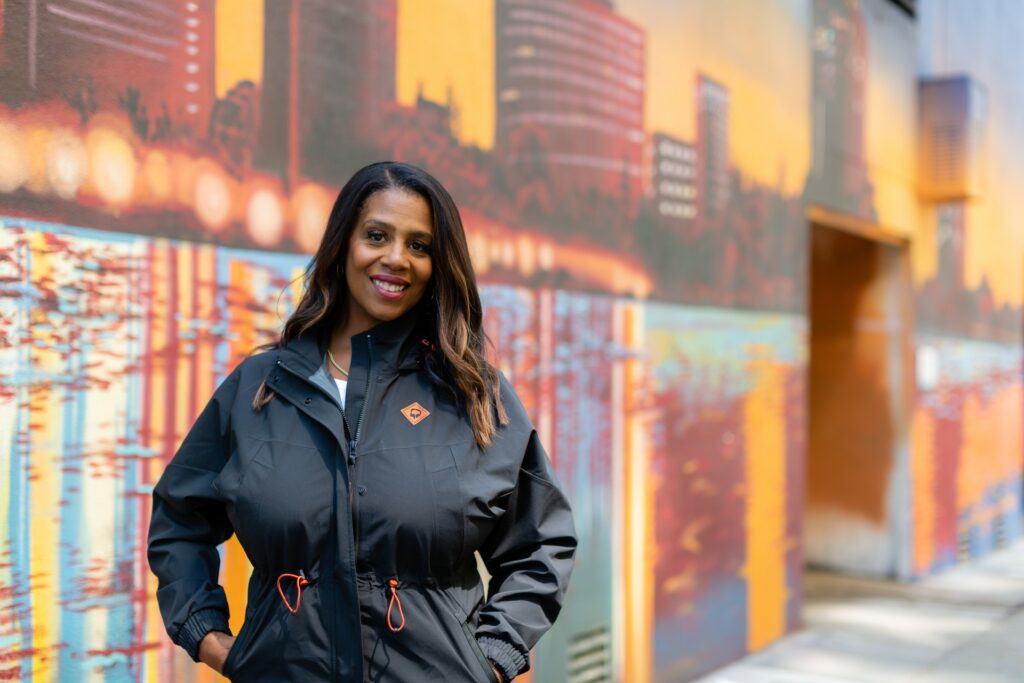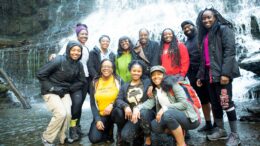If time and money weren’t an issue, what would you do?
That’s what Rue Mapp’s mentor asked her as she faced the completion of her college degree and an uncertain job market.
“I’d probably start a website to reconnect Black people to the outdoors,” Mapp replied, a story she recounts in her new book Nature Swagger. Soon after that, in 2009, she launched the blog Outdoor Afro, which began with stories of her own experiences in nature. It was inspired not just by her own love of the outdoors, but of a desire to increase the visibility of Black people enjoying those spaces.
“From my kitchen table I decided to tell a new story using images — unlike anything I had seen growing up among the glossy outdoor nature publications — of Black people in nature as strong, beautiful and free,” she writes.
The work hit a nerve — and a need.
Since then Outdoor Afro has grown into a powerful not-for-profit organization of outdoor education, recreation and conservation that’s trained more than 100 volunteer leaders who host in-person and online events, including meetup networks in 60 cities and 32 states.
The Revelator spoke with Mapp about what inspired her work, how visual representations of Black people in nature are changing, and what can be done to further that work.
You grew up in Oakland, California, but spent time at your family’s ranch in Lake County. Do you think you would have started Outdoor Afro if you hadn’t had an early connection to nature?
No, but the other thing many people don’t know is I had an early introduction to digital technology. I’ve been into computer programming since I was 11 years old. That helped inform the early creation of Outdoor Afro. I might have launched an Outdoor Afro group without technology, but I was able to quickly understand how social media could serve as an amplifier to share information with thousands of other people.
Outside of the family ranch I grew up on, I also joined many nature-based groups over the years, but those experiences were often disappointing. I found that the digital answer hadn’t satisfied me either. So, I used my blog and website to tell a new narrative of what I believe Black people were capable of in the outdoors. From there, I created and led groups in the outdoors that were truly useful and brought about better connections.
How did the organization grow from a kitchen table blog to where it is today? Was there a moment when you had an inkling that it would become the force that it is?
Yes. I did believe there was something powerful and knew it could become something special. I also realized I had to give myself over to it completely for it to work. Outdoor Afro was simply my calling.
The result is a network that allows me to perform years of experience in the outdoors and use technology, business and my art history education to shift the visual representation deliberately of how our stories are told.

Since you’ve been doing this work, have you seen the visual representation of Black people in nature change?
That is one key milestone that Outdoor Afro helped to achieve from the beginning. We’ve continued to change the narrative of who gets out and leads in the outdoors. When I started Outdoor Afro, you didn’t see these visuals, which was a big problem. There was this false narrative that we didn’t do nature, and even some Black people bought into this falsehood. But I knew it wasn’t true.
It took almost 10 years of persistence to get the story right. Today those glossy magazines now more regularly have people who look like me, and more like America in general. Our country is filled with many types of groups and outdoor experiences. Let’s celebrate them all!
Being Black isn’t a singular experience — it’s reflective of region, age, personal history, etc. [That’s why] Nature Swagger includes stories of many unsung individuals who we can relate to or who remind us of family and friends. Through the book, I want readers to be inspired and see nature from many perspectives and think broadly of what connections to the outdoors can look like.
Do you have a favorite place in nature?
The redwoods are important to me in Oakland’s hills because of their historic value in my own life and region of origin. More than 150 years ago, those redwoods were clearcut due to the California gold rush and the increased demand for wood to build housing.
The beauty of today is witnessing the regeneration of those redwoods. They’ve come back as a second and third generation and have grown tall, which is a testimony of the possibility of regeneration in all our lives. The redwoods help me remember that things can be clear cut, but can also come back anew, stronger and more powerful than ever.
These same redwoods are just a mere 10 minutes from where most Oaklanders live, so they are quite accessible, and they remain a place I often go to experience such awe-inspiring wild nature lessons.
Nature never fails. It always delivers. As I continue to push my own limits — physical, psychological and geographical — I continue to have new moments of awe, challenge and joy, but overall a deepening experience of satisfaction. Pushing ahead with my own outdoor adventures helps keep me on the pulse of what new outdoor enthusiasts are experiencing. It’s also important for me to remain a practitioner and as someone who needs nature’s medicine, too.
How can non-Black folks help support or create space for Black joy, accessibility and safety in nature?
Continue to support the work of Outdoor Afro and others like it and find ways that are personal to you to bring forth a vision of a world connected to nature that we all want to see. Share our network with your friends and family to encourage them to get outside. Anyone can follow us at outdoorafro.org and social @outdoorafro.
You don’t have to have an afro to be a part of Outdoor Afro! I reflect on how my mother made quilts. Outdoor Afro is a patch of this larger quilt of connectedness to create something that is unified and beautiful. The specificity of Outdoor Afro is important but stitched together with the story of all of us.
Get more from The Revelator. Subscribe to our newsletter, or follow us on Facebook and Twitter.
Previously in The Revelator:
Latinos Face Challenges Accessing the Outdoors — and Climate Change Is Adding to Those Barriers
![]()


